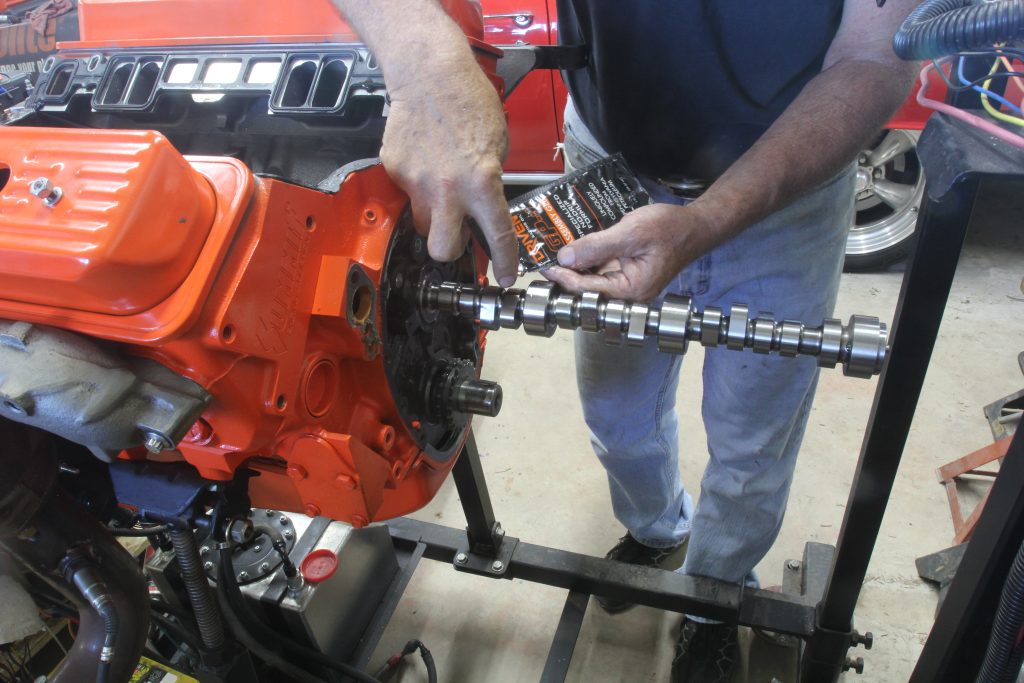I have a 496 Chevy and I want to go with a tunnel ram. What is the largest cam I can go with? It is going in a rat rod gasser.
R.F.

Jeff Smith: This is like asking “How high is up?”
Generally, we like to answer questions that are a bit more focused, but R.F. has given us some clues—though not many—to help us answer his question.
So we’ll put on our Sherlock Holmes-sleuth hat and attempt an answer based on a whole bunch of assumptions, a couple of deductions, and perhaps even a fact or two.
Let’s start with the fact that this big-block is in a rat rod gasser. That indicates that the car is probably lighter than normal street cars, perhaps in the under 2,800-pound range. We don’t know what transmission is in this thing, but we’ll make another assumption that it will use an automatic like a TH400. We’ll also assume it has some kind of decent performance torque converter with roughly a 2,800 rpm stall speed. Right there we’ve made a ton of assumptions, any one of which can affect our cam selection.
Next, R.F. is asking “What is the biggest cam I can go with?”
We’ll assume from this question that he’s not going racing with this car, but rather, looking for a lumpy idle characteristic that will make his engine sound like it has a lot of power. Which leads to this thing I have about guys wanting their engines to idle like race engines.
Knowledgeable engine builders can spot a poser from hundreds of feet away because the engine has no cylinder pressure. A stout race motor uses lots of compression—anywhere from 12.5:1 to 15:1 because compression makes power. But street engines can’t run these kinds of compression ratios without running expensive race gasoline. So you have to compromise on compression and that instantly makes an engine sound flat with a compression ratio of, let’s say, 9:1. A tuned ear can recognize an engine with lots of compression just as easily as one that doesn’t have compression.
Plus, a long-duration camshaft also tends to bleed precious cylinder pressure with long duration and lots of overlap. We mention all this because it affects the camshaft selection. Assuming you want a thumpin’ idle—the best you can expect is to add a camshaft with lots of overlap.
Overlap is the amount of time, in cam degrees, between when the intake valve first opens while the exhaust valve is just closing. This occurs across TDC. Increasing the overlap on a longer duration camshaft is one way to generate that lumpy idle that everybody wants.
We also don’t know if he wants a flat tappet cam or a roller. With a rat rod, we’ll assume a hydraulic lifter, flat tappet cam. The easiest solution is to just go with the longest duration cam that will sound the gnarliest.
The problem is that long-duration camshafts with a tunnel ram and mild compression don’t really run well at part-throttle. You can make them run decently but this requires a lot of tuning on the carburetors (we’re assuming R.F. will be running a pair of carbs).
So to allow some decent tuning windows, it would be better to go a bit more conservative on the camshaft in order to give yourself an opportunity to configure the engine to run acceptably. With that said, I’d go with a more conservative approach with a COMP Cams cam along the line of an Xtreme Energy 274H. This is a dual-pattern cam with more duration on the exhaust side, which adds overlap. The specs for this cam are 230/236 degrees of duration at 0.050 tappet lift with 0.552/0.555-inch of valve lift and a lobe separation angle of 110 degrees.
This will give you a decent lopey idle while still not killing all the low-speed torque.
The next key will be to make sure you have enough pump shot from the carburetors to cover up for large plenum in the tunnel ram when you step on the throttle lightly. The engine will likely run lean right there, which will demand a larger squirter size. I’d also recommend a minimum of 16 to 18 degrees of initial timing with a total mechanical advance of 34 to 36 degrees all in by 3,000 rpm. This will help the part-throttle drivability. Also, use a vacuum advance canister distributor as this will provide additional part-throttle timing where you’ll need it.

I have a 496 BBC ,14to one,pro topline 320 heads mild port work to 375,hillborne stack injection on meth ,power guide 33.13.15 slicks ,800 kg all up with driver alterd ,5000 stall ,solid roller lifters,1.7 set and 1.8 set roller rockers what cam would you suggest and what difference in alcohol cam cheers simon
the xe 274h has lift of 487 /490
I stand corrected you’re talking bib block mine is a small block
hello i have a 454 with 219/219@.050 gross valve lift .485/.485 comp cam .im putting tunnel ram with two holley double pumpers 650cfm (im jetting down to 600cfm).my car is a 1930 chevy all steel 9 inch rear and zoomies .th 400 trans with probably stock converter. Am i going the best route can you give me any feedback ,bigger cam?,larger converter, anything would help mr thank you.
Study the cam catalog sele. Read and re-read the cam specs, Then after thinking it over and deciding on the one you are sure you want to run, order the next grind milder.
What would be a good cam for my stock 5.3 ls that has good power but doesn’t break the bank?